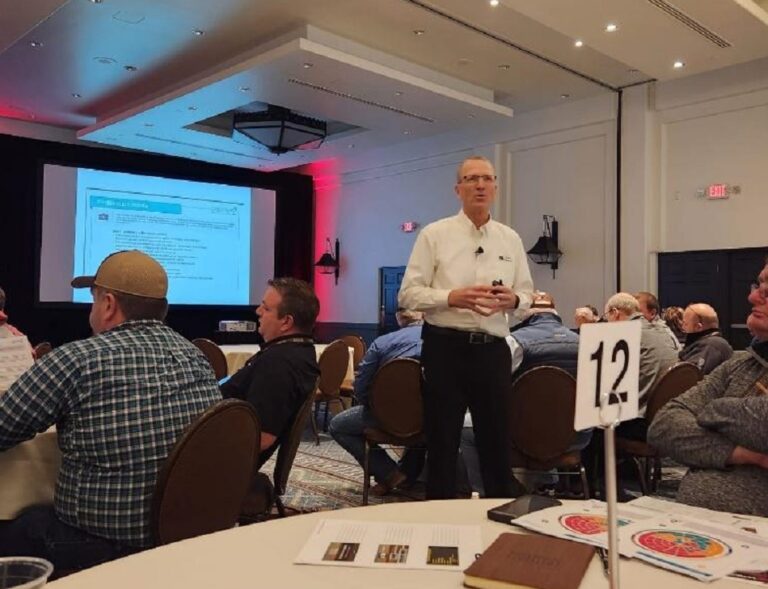Listen better, gain more understanding of what your customer needs, and sell better
Every customer or prospect you meet is seeking one common goal. Do you know what it is? Is it money, bigger yields, lower input costs, or increased ROI? Maybe. But the one thing every one of them wants from you as their salesperson is to – Be understood.
Not just understand farming or crop/livestock farming. Not just farming in this area. But their specific farming circumstances on their farm, with their financial situation, and their family/business dynamics.
And there is only one way to accomplish that as their salesperson. Ask a lot of questions and Listen!
Yet few of us ever get solid training on how to listen. Most of us are aware that we need to turn off distractions like phones. We need to make eye contact and focus on the customer in front of us. We have also been told to take good notes, which is often highly contested when discussing with Ag sales teams. Trust me. Whatever excuse you are using for not taking notes when standing in front of a customer, it’s not cutting it. If the sales discussion is important and the information you are gathering at that sales call is important, then you better be writing it down while standing there. More on this subject another day.
Beyond those basic listening skills, I came across an interesting technique called “Looping”. So, I wanted to bring it to you and see how it can help you.
Looping is a listening technique where the salesperson asks questions of their customer to get clarity on an important topic. Topics like how they make buying decisions, what factors go into their agronomic or livestock production decisions, or how the producer determines the ROI of certain products they buy (mostly the ones you sell).
At regular intervals, the salesperson will loop all the information provided into a summary description of what they just heard. The important part is that it’s in the salesperson’s words as opposed to the customer’s words.
This may sound a lot like “Mirroring, Labeling, or Paraphrasing”, which are great communication skills as well. However, Looping is a bit deeper than those skills. Looping involves you putting the customer’s words in your own words. Summing it up in your own interpretation. Maybe even using an analogy. Again, this is a big-picture view of what you heard so far and is typically used in the later part of your discovery phase. You can use short paraphrasing and mirroring during the question and discussion phase and then Looping it all into a big-picture view of what you heard.
There are two responses from your Looping dialogue. The first is that you got everything correct and the customer confirms that you understand. If so, you are a great listener and note-taker. Congratulations!
The second and more typical response from your Looping dialogue is that your customer corrects those areas of your dialogue that are not correct. This is the golden moment for you to re-open the discovery questions on what you got wrong. Dig into it. Then, go back and do a second Looping summary of the big picture.
Your customer will give you a second response of either,
“Yep, you got it” or,” Yeah sort of, but not really…..”
Round three begins.
You continue to do this until you get it right or maybe come at it another way. Either way, the more you practice this technique, the better you will get at it.
I always tell my audiences that I use everything that I train on. If it works, it stays in my training. If not, I don’t write about it or preach it in my workshops. After learning about the concept of Looping, I put it to use recently as a customer reached out to me for sales team development. He had several teams and the experience levels were all over the place. There are a lot of options on exactly what methods of coaching and training to use as well as fitting within his budget and seasonality of an agribusiness. He thought he knew what he wanted and asked about availability and pricing. Stepping back a moment, I asked a few questions about the team. That led to more questions and more discovery of selling skills, territory management, team culture, and silos within these teams and the company. In the end, I Looped it all together on what we discussed and what he was wanting from me. When I finished, he said, “Yeah, exactly. I haven’t heard anyone say it that way, but yeah. That’s exactly the situation.”
Try it yourself. Try it on a coworker, peer, or family member first if you are nervous.
Remember, this is not manipulation unless you use it to sell them something they don’t need.
However, it is a great way to Listen better, make sure you understand what your customer needs, and be a better salesperson!


